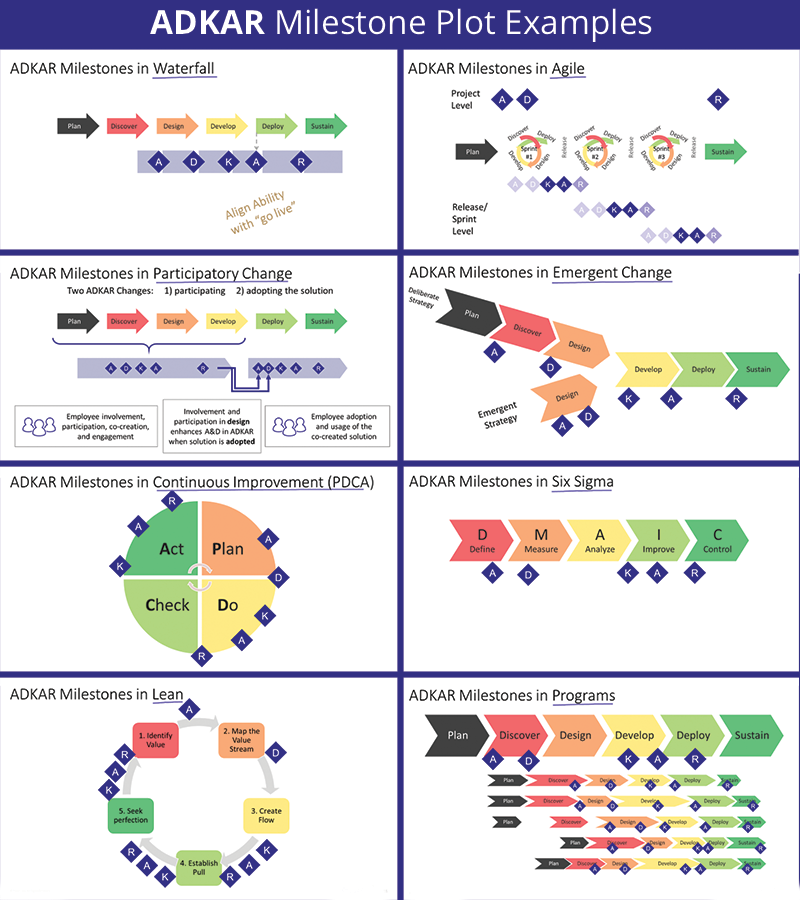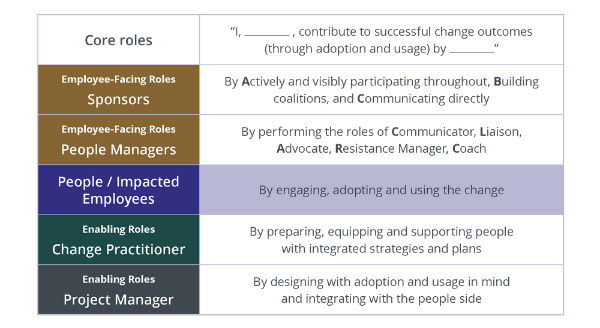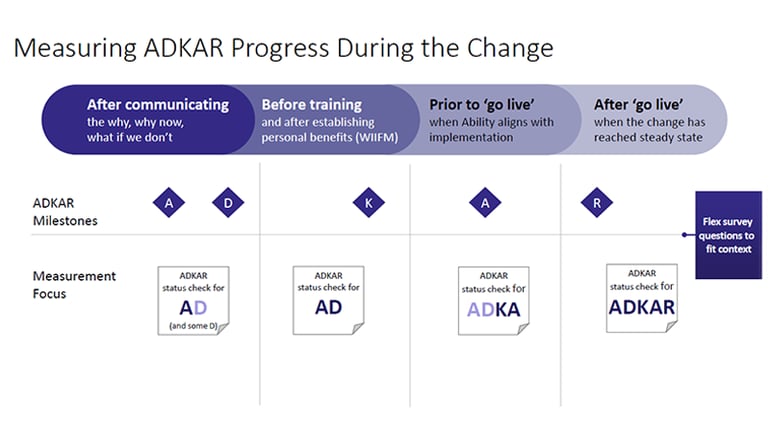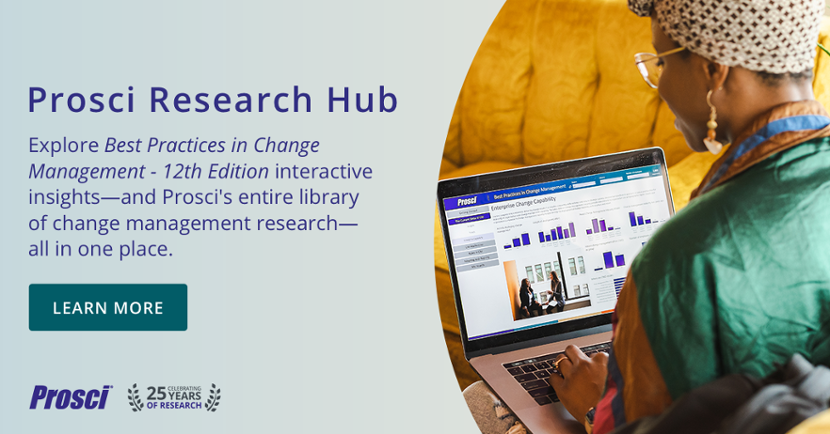4 Advanced Applications of the ADKAR Model

4 Mins
Updated: March 10, 2024
Published: April 13, 2022

Change is not a switch—it’s a process individuals go through. When you apply the Prosci Methodology to project-based changes, you still need to focus on the actions that drive individual change. Fortunately, the ADKAR Model, which sits at the center of the Prosci Methodology, is applicable to changes that impact one person, five people, 20 people, a thousand people, or thousands of people.
How to Apply ADKAR to Projects and Solutions
Here are four advanced ways to apply the Prosci ADKAR Model to your organizational projects and initiatives, and achieve success from change.
1. Map project milestones to ADKAR milestones
Get deeper insights and data on applications of the Prosci ADKAR Model, along with
access to Prosci's entire library of research when you subscribe to Research Hub.

2. Activate core roles during change
Change practitioners are like the director of a play, standing backstage and creating a successful outcome by working with and through others. They have already defined what success looks like, and it’s their job to connect and activate change roles. This means ensuring that the right people are in the right places, helping those people perform their role-specific activities, and helping them send the messages needed to bring about the desired outcome.
From behind the scenes, the change practitioner applies structure and intent to the change, enabling and equipping others in their change roles and collaborating on a unified approach with the project manager.
 Employee-facing roles include sponsors and people managers. Senior leaders authorize the change and are accountable for results. People managers support their direct reports on their individual change journeys. But before we can expect them to perform their roles effectively, we must acknowledge that they are people going on their own change journeys.
Employee-facing roles include sponsors and people managers. Senior leaders authorize the change and are accountable for results. People managers support their direct reports on their individual change journeys. But before we can expect them to perform their roles effectively, we must acknowledge that they are people going on their own change journeys.
As a change practitioner, you apply the ADKAR Model to help senior leaders and people managers understand the change they are experiencing, identify their ADKAR barrier points to change, and support them with whatever they need to overcome those barriers. To be successful in their change management roles, each senior leader and people manager first needs to move through their own ADKAR journey:
- Awareness of the need for change management
- Desire to participate and support change management in their role
- Knowledge of how to fulfill their specific change management role
- Ability to fulfill their specific change management role
- Reinforcement to continue fulfilling their change management role
When you talk to sponsors and people managers about how to fulfill their change management roles (which falls under Knowledge), they're first going to wonder, “Why?” “Why now?” and “What's in it for me?” So, you want to first help them achieve Awareness and Desire. Sponsors and people managers will also need support to gain the Knowledge of how to fulfill their roles and develop the Ability to execute the roles through practice, and then Reinforcement to ensure that they continue to fulfill their critical roles during change.
3. Equip senior leaders and people managers with ADKAR
Once you activate the people-facing roles, your next step to give them a tool they can use to fulfill their roles going forward. The ADKAR Model is more than a framework for change practitioners. Senior leaders and people managers also use it to engage and support their teams during change.
For example, if a leader has and ADKAR mindset and speaks a common language of ADKAR, they can reach out to a peer and say, “I’m having an Awareness challenge on this project. I don’t know why it’s happening, why it’s happening now, and what the risks are if it doesn’t happen.” And the peer will be able to help them through the barrier point. A people manager can share the ADKAR Model with front-line employees, and use it as a tool to help them overcome resistance, coach them through challenges, and have meaningful conversations in language they all understand.
4. Measure ADKAR progress throughout the project lifecycle
How do you know your people are progressing through their ADKAR journeys as planned? You can measure ADKAR throughout the project lifecycle, use what you learn to guide your change management strategy, and find adaptive strategies when things aren’t going according to plan.
For example, let’s say you have mapped your ADKAR milestones and aligned Ability with go-live. It’s early in your project lifecycle, and you have done some early communication, so your measurement focus is going to be on answering “Why? “Why now?” and “What if we don't?” At this point, you want to an Awareness check and a little bit of a Desire check.
Before training or before establishing the change and the personal benefits, you might do a full Awareness and Desire check. As you approach go-live, when you're testing to make sure Ability aligns with it, you can do some reinforcement of Awareness and Desire, and really focus on building Knowledge and Ability.
After go-live, you shift attention to the full ADKAR Model:
- "I understand why" (Awareness)
- "I know how" (Knowledge)
- "I have decided to" (Desire)
- "I am able" (Ability)
- "I will continue to do so" (Reinforcement)
Throughout the project, surveys enable you to ask the right questions at the right time to make sure people are progressing through their ADKAR journeys.
Successful Change With Applications of ADKAR
Organizational changes happen one individual at a time. The ADKAR Model offers a proven framework you can use to facilitate the individual change process–in yourself, your sponsors and people managers, and front-line employees. It’s so flexible, ADKAR can guide your change management strategy, measure progress of your initiatives, course correct as needed, help your organization speak a common language around change, and much more.



